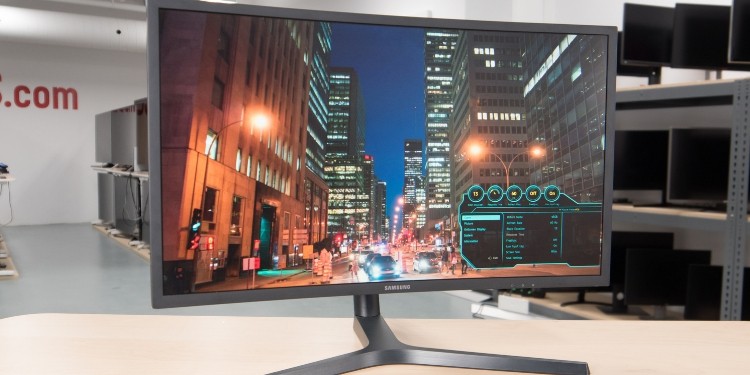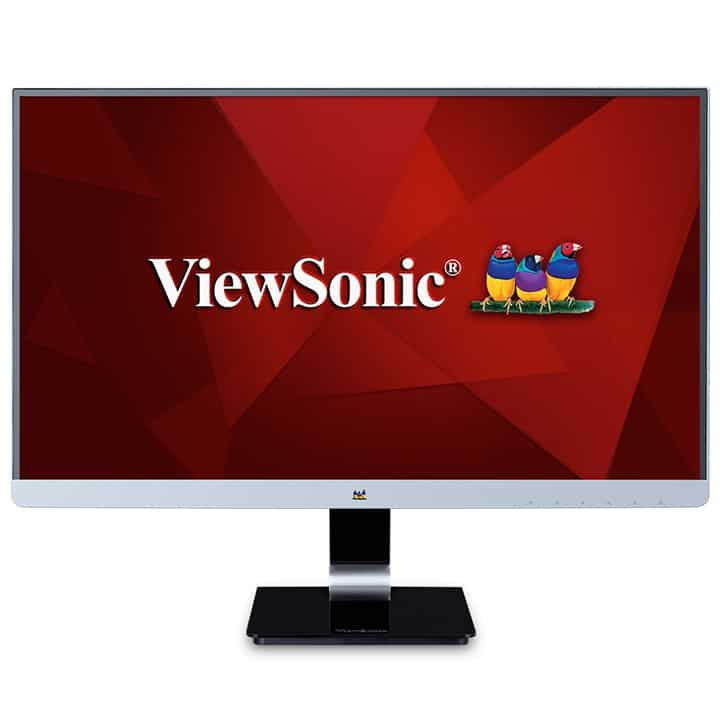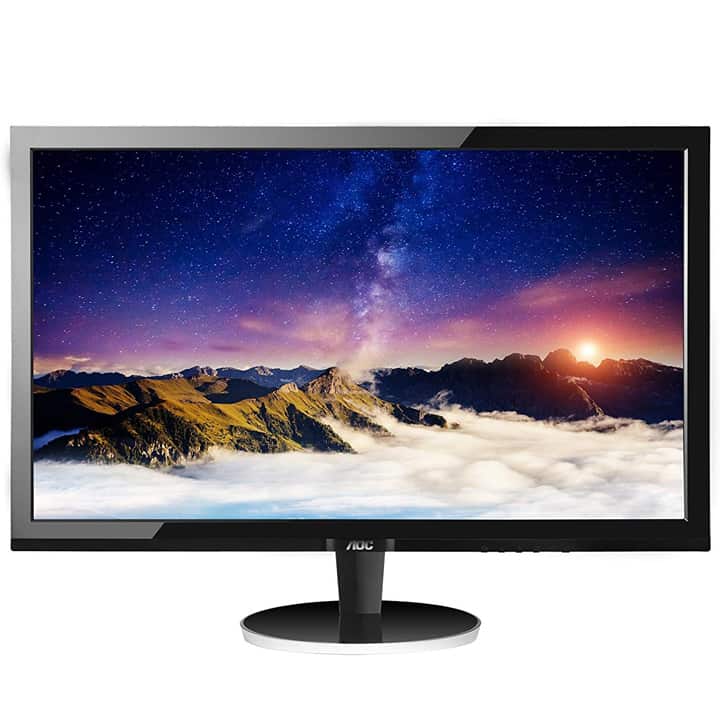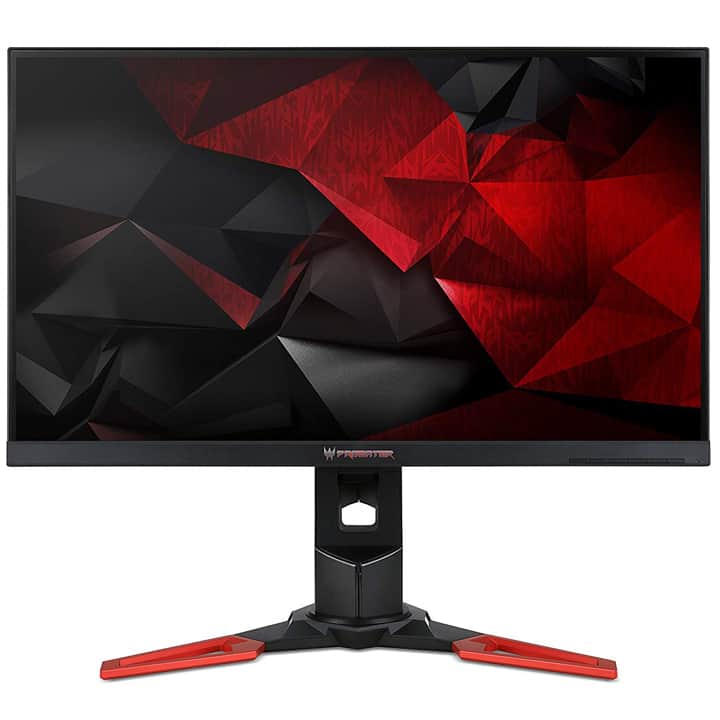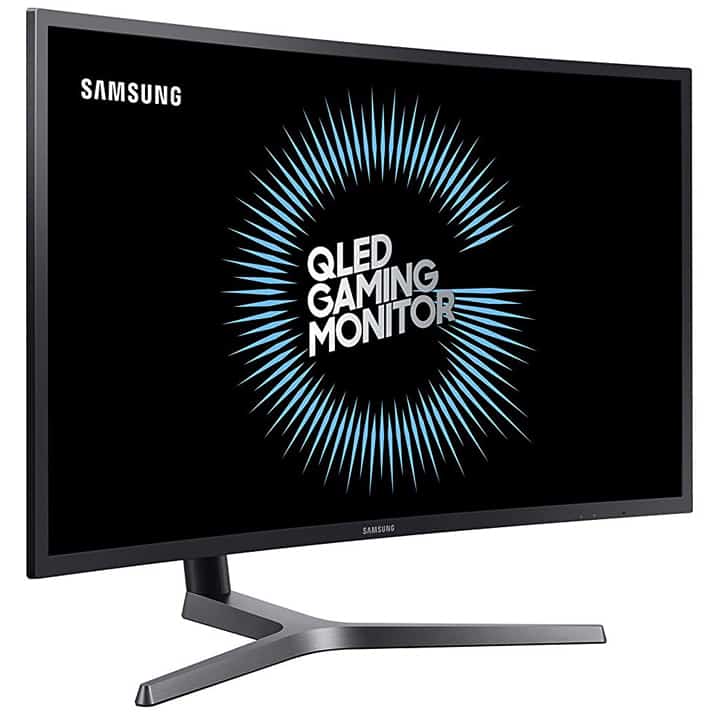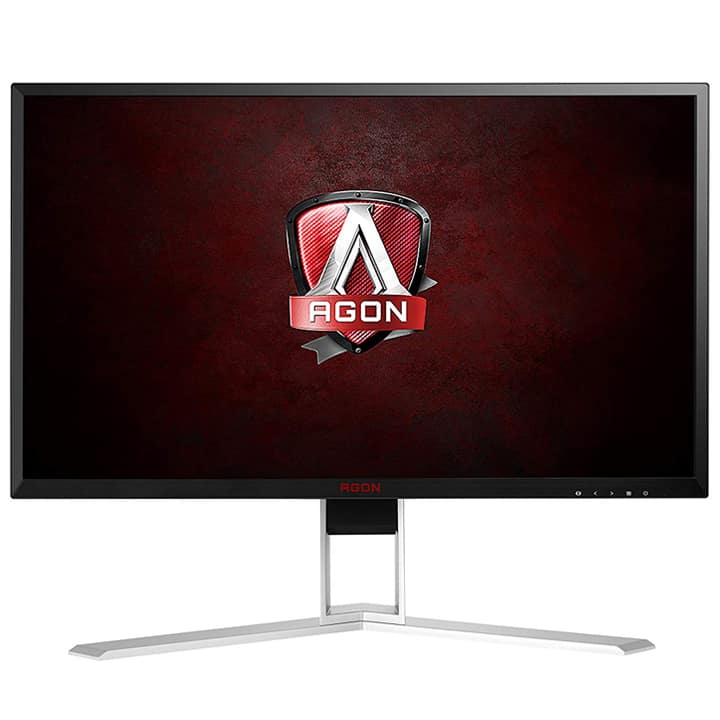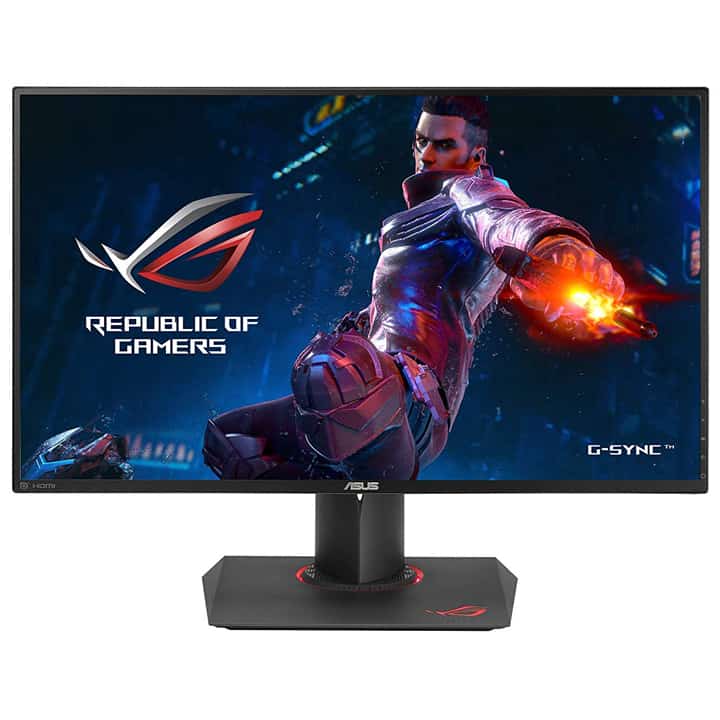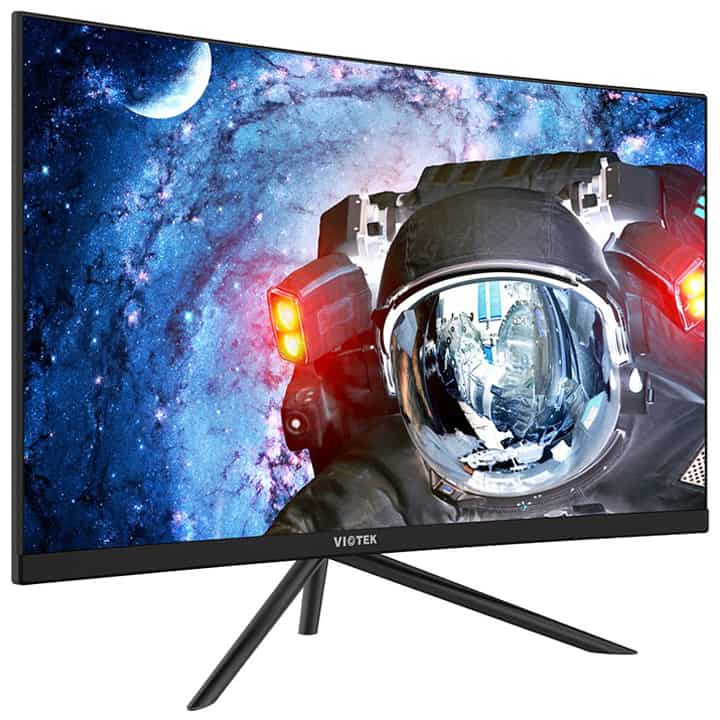If you’ve been using a 1080p monitor for a while and want a 1440p monitor, you’re in the right place because, in this article, we’re going to help you find the best 1440p monitor. The most obvious benefit of the 1440p resolution is the enhanced visuals, but it’s also worth noting that a higher resolution also makes larger screen sizes look good. (A large screen at a low resolution will look way worse than a small screen at a small resolution.)
Below, we’ve picked seven of the best 1440p displays we could find. Most are 27-inch and support some form of VRR, but some others break away from that mold. Whether you need the best 1440p G-Sync monitor or extra features like HDR, we think our selection has you covered. Even if you’re completely new to monitor tech, we’ve also included a buying guide at the bottom of the article.
Enough pretense, though. Let’s find the best 1440p gaming monitor for you!
budget IPS joy
ViewSonic VX2470-SMHD
- Screen size: 24-inch
- PPI: ~122
- Refresh rate: 60 Hz
- VRR: N/A
- Response time: 4 ms
- Panel type: IPS
best budget
AOC Q2778VQE
- Screen size: 27-inch
- PPI: ~109
- Refresh rate: 60 Hz
- VRR: N/A
- Response time: 1 ms
- Panel type: TN
IPS panel built
Acer Predator XB271HU bmiprz
- Screen size: 27-inch
- PPI: ~109
- Refresh rate: 144 Hz (165 Hz OC guaranteed)
- VRR: G-Sync
- Response time: 4 ms
- Panel type: IPS
best HDR implementation
Samsung CHG70
- Screen size: 27-inch
- PPI: ~109
- Refresh rate: 144 Hz
- VRR: FreeSync 2
- Response time: 1 ms (MPRT)
- Panel type: VA
FreeSync support
AOC Agon AG271QX
- Screen size: 27-inch
- PPI: ~109
- Refresh rate: 144 Hz
- VRR: FreeSync
- Response time: 1 ms
- Panel type: TN
G-Sync monitor
ASUS ROG Swift PG279QZ
- Screen size: 27-inch
- PPI: ~109
- Refresh rate: 144 Hz (165 Hz OC guaranteed)
- VRR: G-Sync
- Response time: 4 ms
- Panel type: IPS
144 Hz refresh rate
Viotek GN27DB
- Screen size: 27-inch
- PPI: ~109
- Refresh rate: 144 Hz
- VRR: FreeSync
- Response time: 5 ms
- Panel type: VA
Table of Contents
1. ViewSonic VX2470-SMHD
The best 24-inch 1440p monitor is also a budget IPS joy
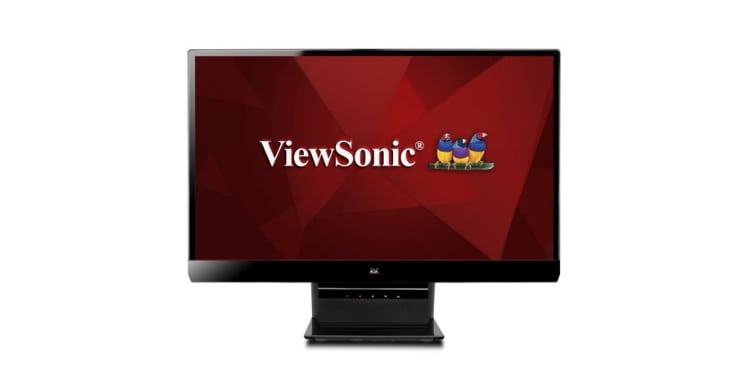
- Screen size: 24-inch
- PPI: ~122
- Refresh rate: 60 Hz
- VRR: N/A
- Response time: 4 ms
- Panel type: IPS
- The highest PPI
- Smaller size more convenient for most users
- IPS panel
- No VRR
Remember how we said most of the monitors are 27-inches? Well, first up is our 24-inch pick, the ViewSonic VX2470-SMHD. If you don’t have room for a 27-Inch monitor on your desk, or you just want some really great PPI, then this is the monitor for you.
With ~122 PPI versus the ~90 on your typical 1080p display of the same size, you’re looking at a pretty big boost in clarity. This clarity will be especially noticeable in desktop usage and games, though most video content is in either 1080p or 4K. (We recommend 4K if you have the storage space since it’ll scale to 1440p and look a bit better.)
Surprisingly for a budget offering like this one, you also get IPS! The IPS panel will offer better color reproduction and viewing angles, especially coming from a TN panel. While you don’t get VRR, you get a solid 4 ms response time and some overclockability. (Most users report 80 - 85 Hz in overclocks, which is really good for a panel like this one!)
2. AOC Q2778VQE
The best budget 1440p monitor boasts a 1ms response time and low price
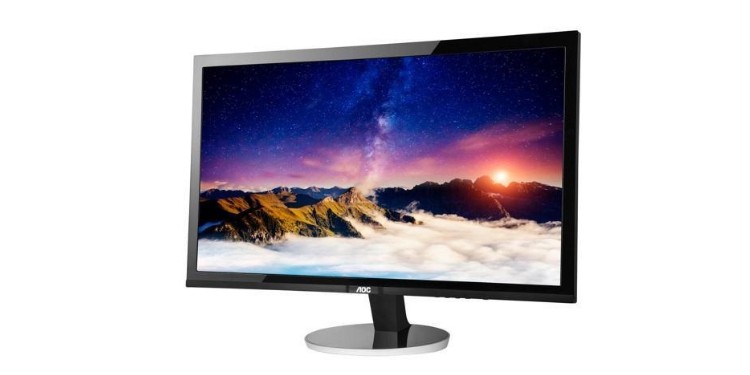
- Screen size: 27-inch
- PPI: ~109
- Refresh rate: 60 Hz
- VRR: N/A
- Response time: 1 ms
- Panel type: TN
- TN panel means no real input lag
- Cheaper than most 1440p IPS monitors
- Worse colors and viewing angles than an IPS monitor
- No VRR
If you’re a gamer on a budget who just wants a 1440p monitor, then the AOC Q2778QE may be the right choice for you. Its 27-inch screen size will translate to a more immersive gaming experience, and when combined with the 1440p resolution, you’ll be able to pick out fine detail more easily. If you’re competitively-oriented but can’t afford 144 Hz, this monitor is also powered by a TN panel.
While TN panels don’t offer the excellent colors of an IPS display, they do cut down on costs and minimize input latency. The features of this monitor combined mean that it’s going to provide just about the best 60 Hz gaming experience out there-- and some users are even reporting an overclock to 75 Hz!
Aside from the typical TN panel tradeoffs, this monitor is also lacking VRR. If you’re playing games at 60 FPS and manage to overclock the monitor like others have, though, you should still be able to avoid most screen tearing.
3. Acer Predator XB271HU bmiprz
The best 1440p 144Hz IPS monitor is the Acer Predator
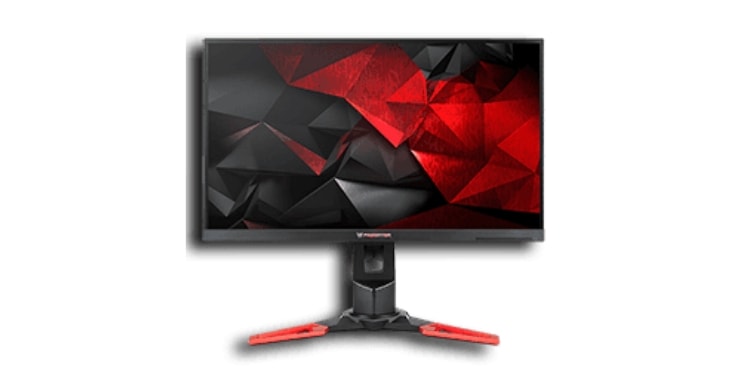
- Screen size: 27-inch
- PPI: ~109
- Refresh rate: 144 Hz (165 Hz OC guaranteed)
- VRR: G-Sync
- Response time: 4 ms
- Panel type: IPS
- IPS panel built for great viewing experience
- 144 Hz and G-Sync ensure butter-smooth gaming
- More expensive
- AMD GPUs can’t use G-Sync
The Acer Predator XB271HU bmiprz is our pick for best 1440p 144 Hz IPS monitor. That’s… a lot of things for a monitor to be, but once you have this sucker on your desk, you’ll see why it’s earned all those descriptors.
First and foremost, the IPS display is of very high quality. Boasting stellar color reproduction (better than most cheaper displays, even IPS ones), G-Sync support, and a whopping 144 Hz refresh rate, this monitor has pretty much everything a gamer could want. As long as you have an Nvidia GPU, all these features combined should make you a fairly happy camper, especially if you can push games to run at its 144 Hz refresh rate.
Even aside from the display itself, you also have the benefit of plentiful adjustment options, including height and screen rotation. You can even overclock to 165 Hz!
The only real downside of this monitor is its price. While it’s currently retailing for a bit under $600, that’s still a lot of money to drop on a display. Additionally, the G-Sync thing may be a downside if you’re on an AMD GPU. While AMD has the courtesy to make their standard royalty-free and cross-compatible, Nvidia… did not.
4. Samsung CHG70
The Samsung CHG70 is the best 1440p HDR monitor
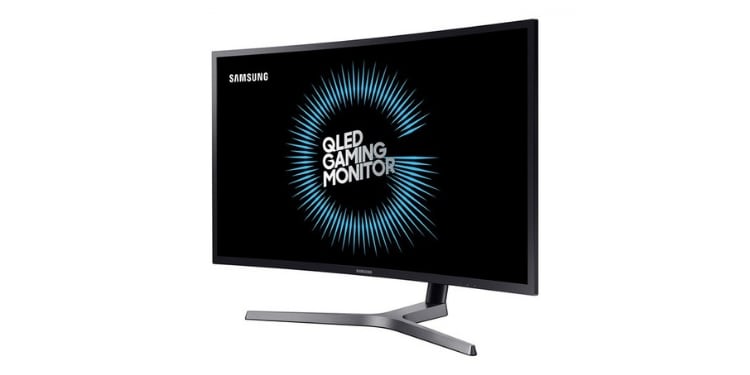
- Screen size: 27-inch
- PPI: ~109
- Refresh rate: 144 Hz
- VRR: FreeSync 2
- Response time: 1 ms (MPRT)
- Panel type: VA
- The best HDR implementation in a PC monitor
- 144 Hz refresh rate and FreeSync 2
- FreeSync compatible with current-gen Nvidia & AMD GPUs
- VA panel offers better colors and angles than TN, no ‘IPS glow’
- Nonstandard MPRT response time, GTG is definitely higher
HDR… isn’t doing so great on PC. While 4K TVs and consoles have taken well to HDR, most PC monitor manufacturers can’t seem to figure out how to get a great HDR picture. It makes sense, though, since a smaller display means more (and smaller) lights. The Samsung CHG70 shares a lot in common with Samsung TVs, though, and that includes a fairly strong HDR implementation.
In our experience, and in tests from outlets like RTings, the CHG70 has proven itself to be the best HDR monitor. This makes it especially appealing to console gamers who want a monitor, especially those with an Xbox One X, which will work with the FreeSync on this monitor. Speaking of FreeSync, there’s actually an improved FreeSync 2 implementation here, which includes compatibility with FreeSync over HDMI!
The VA panel may not offer IPS’ colors or TN’s smoothness, but it still provides an awesome experience that’s the best of both worlds. Combined with an out-of-box 144 Hz refresh rate, 1440p resolution, and a curve, this monitor still provides a fairly great viewing experience. A few users are porting overclocks in the mid-to-high 150s Hertz range, too, though 144 Hz should more than suffice for most users.
The only real issue we have is the marketing tactic used here. MPRT is much less informative than GTG when it comes to measuring monitor response time, and often it’s used as a way to mask severe motion blur. Fortunately, that doesn’t seem to be the case here: if we had to guess, the GTG response time is probably at or below 5 ms.
...also, the monitor is pretty costly. Not nearly as costly as an HDR-capable 4K TV, though.
5. AOC Agon AG271QX
From AOC, the best 1440p 144Hz FreeSync monitor
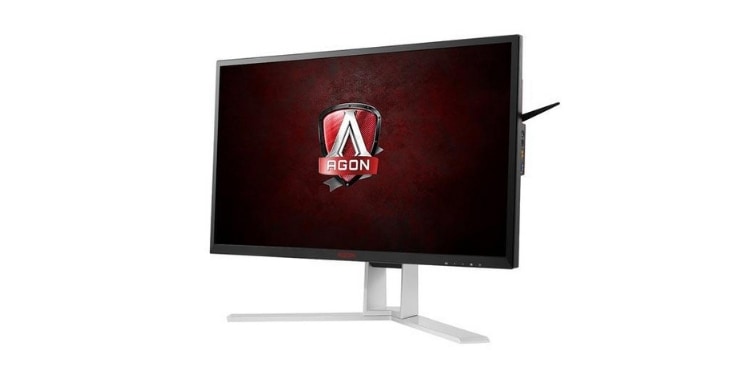
- Screen size: 27-inch
- PPI: ~109
- Refresh rate: 144 Hz
- VRR: FreeSync
- Response time: 1 ms
- Panel type: TN
- 144 Hz refresh rate and FreeSync support
- FreeSync works with AMD and current-gen Nvidia GPUs
- TN panel is optimized for a competitive gaming experience
- Cheaper than comparable IPS displays
- TN downsides still present
If you’re an AMD user or prefer TN panels, don’t worry: there are still great high-end monitors for you.
Chief among them is the AOC Agon AG271QX. 24 inches, 144 Hz, FreeSync… all you need for a hyper-smooth gaming experience is here. Unfortunately, we weren’t able to find a comparable FreeSync IPS display, so this is a competitively-oriented TN monitor. If you want better colors and viewing angles with FreeSync support, we recommend taking a look at our #4 pick, which uses a VA panel.
Thanks to the TN panel in this monitor, you’re getting it for much cheaper than comparable IPS displays. The 1 ms response time also helps soften the TN blow, especially if your goal is to game competitively and you care more about the smoothest gameplay than pretty graphics.
For AMD users and eSports gamers, this monitor will probably be king.
6. ASUS ROG Swift PG279QZ
From ASUS, the best 1440p 144Hz G-Sync monitor
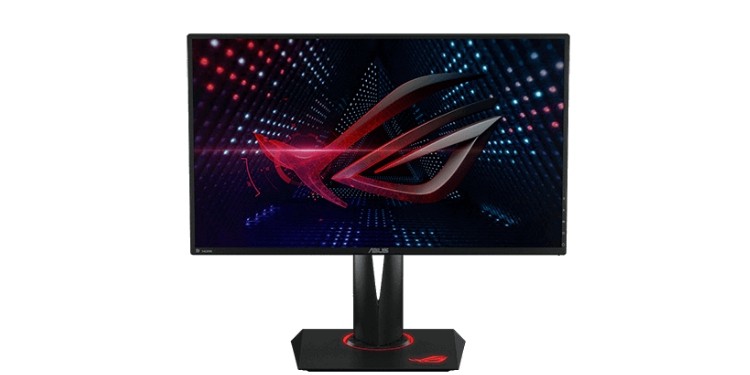
- Screen size: 27-inch
- PPI: ~109
- Refresh rate: 144 Hz (165 Hz OC guaranteed)
- VRR: G-Sync
- Response time: 4 ms
- Panel type: IPS
- 144 Hz refresh rate, with a guaranteed OC to 165 Hz
- G-Sync
- High price
- G-Sync only supports Nvidia GPUs
If you want the best 1440p 144 Hz G-Sync monitor, congratulations: this is it.
The ASUS ROG Swift PG279QZ should offer all the features you’re looking for. You have an IPS panel running at 144 Hz and offering a guaranteed overclock to 165 Hz. You have best-in-industry color reproduction and viewing angles, G-Sync, and a truly ridiculous level of adjustability. ROG has been an enthusiast’s favorite line for monitors and GPUs for a while now, that story doesn’t change with this monitor.
The only thing this monitor doesn’t have is HDR, but truthfully that won’t matter to most PC gamers. Even when handled well, HDR doesn’t make quite as big a difference on a PC monitor as on a large 4K TV, and it’s mainly consoles that have decent support for it.
A more serious downside of this monitor is that its G-Sync implementation locks out support for AMD GPUs. If you’re using a Radeon VII or similarly high-end AMD GPU, sorry: you’re going to have to go elsewhere or grin and bear the lack of FreeSync support on this display. Also, this is definitely one of the more expensive picks on this list.
This monitor is generally identical to its last-gen counterpart, the ROG Swift PG279Q. Buy whichever is cheaper.
eSports gamer with G-Sync and want a 1ms TN panel instead? Grab the TN version of this monitor.
7. Viotek GN27DB
A balanced pick for best 1440p 144Hz gaming monitor
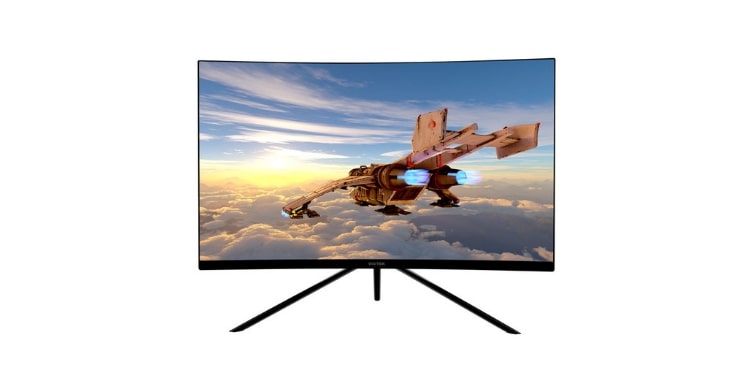
- Screen size: 27-inch
- PPI: ~109
- Refresh rate: 144 Hz
- VRR: FreeSync
- Response time: 5 ms
- Panel type: VA
- 144 Hz refresh rate and FreeSync ensure smooth gaming
- FreeSync supports current Nvidia and AMD GPUs
- VA panel provides better viewing experience than TN, trades with IPS
- Excellent pricing for features
- Response time is marginally higher
Last but not least is the Viotek GN27DB. It’s a curved 27-inch, 1440p, 144 Hz, VA monitor. In fact, it actually uses a Samsung VA panel, just like the Samsung monitor listed above, but it does not come with HDR support. The response time on this monitor is also rated for 5 ms GTG, which is the highest response time on this roundup… except perhaps the aforementioned Samsung display, though we can’t ascertain where it really falls.
Unlike the Samsung display and most of the 1440p 144 Hz displays on this list, though, this monitor is pretty cheap. It retails for right above $300 at the time of writing, and that’s an absolute steal for a monitor packing all the features this has. For the budget-conscious gamers among you who want 1440p and 144 Hz as cheap as it gets… you may just be in the right place.
The only reason we’d be even slightly cautious about this monitor is that it comes from an unfamiliar brand: Viotek. Judging by the masses of generally-positive reviews, though… we think it’ll be fine.
Buying The Best 1440p Monitor For You
In this section, we’re going to help you understand what all the specs we’ve mentioned for these 1440p (2560×1440) monitors are. Once you can translate the specs and jargon, it’ll be much easier for you to make a selection that suits your needs. These monitors start retailing in the ~$200 range, after all, and you shouldn’t spend that willy-nilly.
What is PPI, and why does it matter?
Unlike other display reviews around the web, we’ve made a point to include PPI measurements in our reviews. PPI stands for “pixels per (square) inch”, and it changes depending on the size of the display, even if the resolution stays the same. In the case of this article, the vast majority of our selections should have the same or similar ~109 PPIs, but you’ll notice that one of our picks is actually a bit higher.
To explain the difference a bit better, imagine 3 1440p monitors, side by side. 24 inches, 27 inches, and 32 inches. Despite the fact that these all have the same resolution, the 24-inch monitor will look the clearest, and the 32-inch monitor will look the blurriest.
Why? Well, you can think of it as each resolution comes with a certain amount of pixels. As such, smaller screens pack more of those pixels into a smaller space. Since you usually sit close to a computer monitor, this means you are less likely to see individual pixels.
Below, we’ll list a few common PPIs to help you better understand how this works.
- 40-Inch HDTV – ~55 PPI. This would be unacceptably low for a PC monitor at average viewing distance but looks great from a couch.
- 24-Inch 1080p Monitor – ~90 PPI. At average viewing distance, this looks just fine, with little noticeable blurring or pixelation.
- 24-Inch 1440p Monitor – ~122 PPI. At average viewing distance, this looks absolutely stellar. No noticeable blurring or pixelation.
- 27-Inch 1440p Monitor – ~109 PPI. At average viewing distance, this looks pretty good. It’s a respectable step up from 1080p, especially coming from a 24-Inch monitor. Most of the monitors on this list target this.
Panel type and the differences they make
What many people don’t consider– but should– is the panel type of your monitor. The panel type has a massive impact on just about everything else about your monitor, most importantly its: pricing, color reproduction, and responsiveness.
- TN – Cheapest and most responsive. Comes at the cost of much worse viewing angles and color reproduction. Recommended for very tight budget gamers or dedicated eSports pros.
- IPS – Most expensive, but offers the best color reproduction and viewing angles. Responsiveness varies, but most high-end IPS panels (especially running at 144 Hz), are only marginally less responsive than comparable TN panels. Recommended for the vast majority of gamers and consumers.
- VA – A curious middle-ground between TN and IPS in just about every way. Particularly favored among those who don’t like “IPS glow”, which is noticeable on the corners of many IPS displays. Tends to trend cheaper than IPS, but not as cheap as TN.
Refresh Rate and Display Overclocking
Refresh rate is measured in Hertz, and it counts the number of unique images your monitor can display in a second. This corresponds to framerate, or FPS, which measures the number of unique frames that your game can output in a second. While not the exact same measurement, these two are closely-related enough that you can only see a maximum of 60 FPS on a 60 Hz monitor, 70 on 70 Hz, and so on.
The higher your refresh rate, the smoother your gaming experience will be… provided your FPS is high enough to keep up.
Display overclocking in this context refers to increasing your refresh rate through, say, Nvidia Control Panel. Most displays can be overclocked by at least a few Hertz, and the ROG Swift has a guaranteed OC to 165 Hz from its base 144 Hz.
- 60 Hz – Basic and smooth.
- 75 Hz – Ever-so-slightly smoother.
- 120 Hz – A massive boost over 60 Hz, providing the level of smoothness needed for eSports-level competition. Mostly phased out by 144 Hz in the market, though.
- 144 Hz – Marginal improvement over 120 Hz, but the most popular high refresh rate by a considerable margin. Recommended for eSports gamers, or anyone who primarily plays online multiplayer titles.
- 240 Hz – While a massive leap over other refresh rates, the perceived change here will be much less noticeable than, say, the jump from 60 to 144 Hz. We couldn’t find any 1440p monitors with this refresh rate.
Variable Refresh Rate (VRR), and why it matters
If your FPS exceeds your refresh rate, or dips erratically enough below it, you’ll notice screen tearing. Screen tearing can be fixed by triple-buffering or V-Sync, but these come at the cost of lost performance and increased input lag, which is particularly unwelcome for those playing high-precision action games or competitive multiplayer games.
Variable Refresh Rate technology allows a monitor and a GPU to more directly interact. This will result in refresh rate always matching FPS within an allotted range. G-Sync and FreeSync are the Nvidia and AMD versions of this technology, respectively, though G-Sync comes at a higher price premium and supports only Nvidia GPUs. While the above mainly handle FPS that fall short of your monitor’s refresh rate, solutions like Nvidia Fast Sync or AMD Enhanced Sync manage FPS that exceed it.
With a VRR-powered display, you’ll enjoy a much smoother gaming experience, even when you drop below 60 FPS on a 60 Hz display. If you can afford a VRR panel, we highly recommend it.
Response time and input latency
Response time is measured in milliseconds. The typical standard is GTG, or Gray-To-Gray, but a few manufacturers like to use MPRT for a lower number. Generally-speaking, 5 ms GTG or less is what you want in response time, though only TN panels can achieve 1 ms.
While response time is tied to input latency, it isn’t an exact measurement by any means. It’s difficult to quantify input latency without extensive testing, but we’ve verified that each and every one of the monitors listed above has little-to-no noticeable input lag. If you’re paying your bills with this, though, we recommend going for a 144 Hz, 1 ms, TN panel if at all possible.
Below, we’ve listed common ranges in GTG.
- 1-2 ms – Ideal for competitive gamers
- 3-4 ms – Great for everyone else
- 5 ms – Okay.
- 6+ ms – Not good
- 10+ ms – Awful
